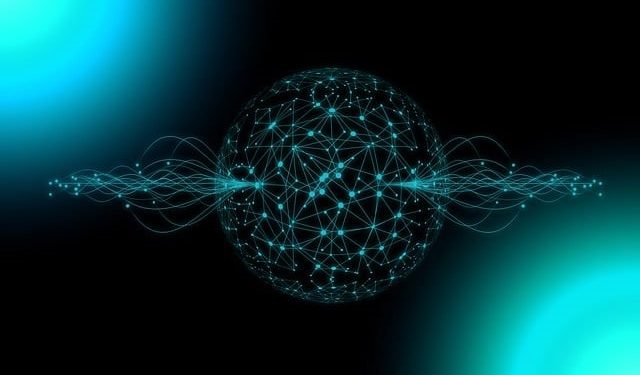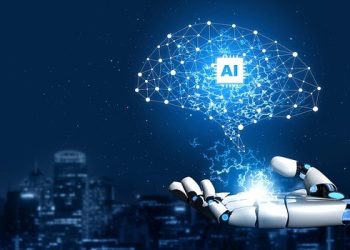The types or levels of AI
Key fields of AI
The applications of AI
Where we are and where we are going in the AI development process
In the first article of this series we looked at the definition and history of the development of artificial intelligence, from the origins at the end of World War 2 with Turing to the recent explosion of the last 2 years.
In this second article we will develop the types or levels of artificial intelligence, the fields, areas or domains covered by AI, as well as the main applications, ending by assessing the situation in which we currently find ourselves and envisioning the main future developments.
The types or levels of AI
Experts consider that there are 7 types, or levels, of Artificial Intelligence: Narrow AI, Artificial General Intelligence, Artificial Super Intelligence, Reactive Machine AI, Limited Memory AI, Theory of Mind AI, and Self-Aware AI.
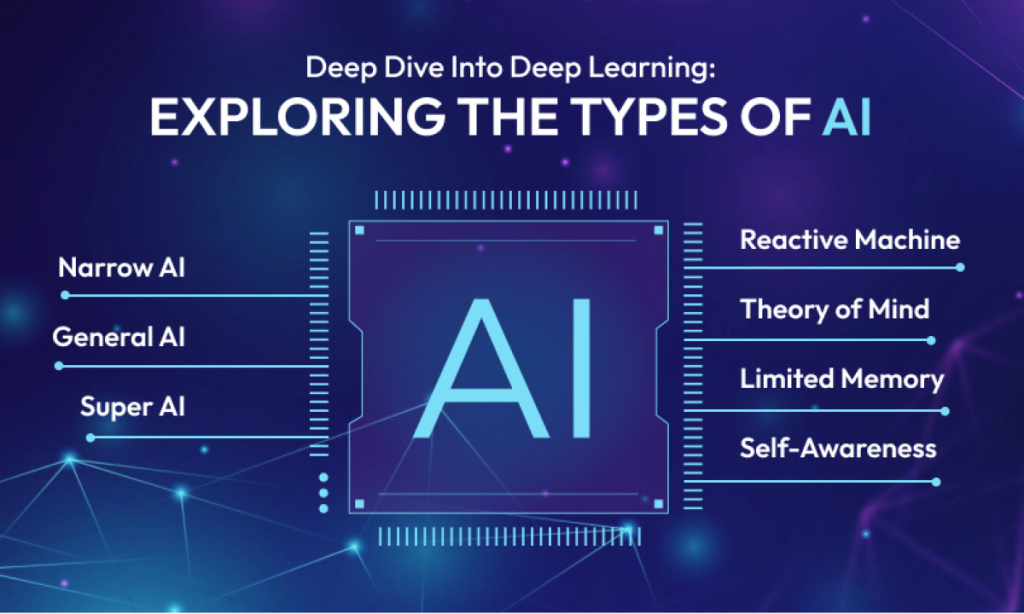
Narrow AI: AI designed to complete very specific actions; unable to learn independently.
Artificial General Intelligence: AI designed to learn, think, and perform at human-like levels.
Artificial Superintelligence: AI capable of surpassing the knowledge and capabilities of humans.
Reactive Machine AI: AI capable of responding to external stimuli in real time; unable to build memory or store information for the future.
Limited memory AI: AI that can store knowledge and use it to learn and train for future tasks.
AI Theory of Mind: AI that can sense and respond to human emotions, as well as perform the tasks of memory-limited machines.
Self-aware AI: AI that can recognize the emotions of others, as well as having a sense of self and human-level intelligence; the final phase of AI.
Key fields of AI
The main fields of AI are Machine Learning, Natural Language Processing, Computer Vision, Neural Networks, Deep Learning, Robotics, Fuzzy Logic, and the Expert System.
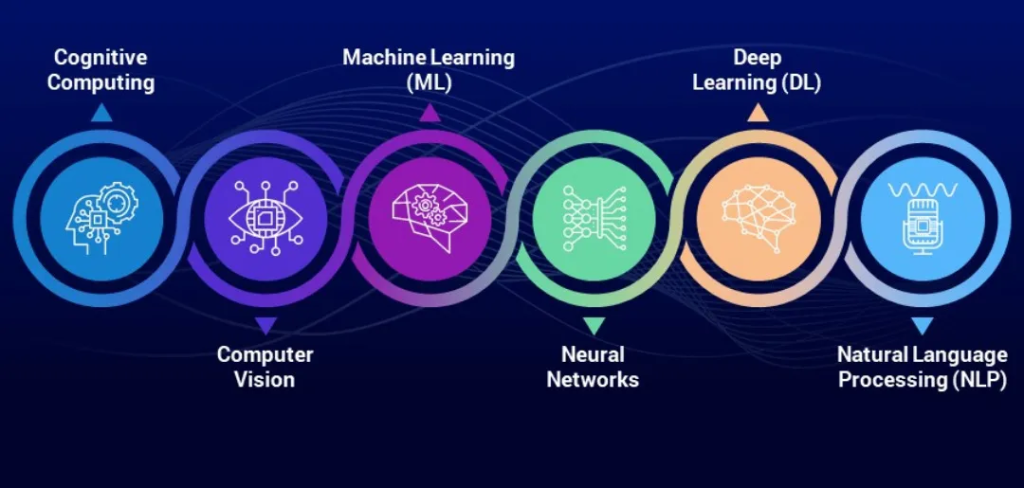
Machine Learning is based on the concept that systems/machines can learn from data, recognize patterns, and make decisions with little to no human interference. It is simply having a computer perform a task without specifically programming it to do so.
Natural Language Processing (NLP) focuses on the interaction between computers and human languages, allowing machines to understand, interpret, and generate human language.
Computer Vision involves enabling machines to interpret and make decisions based on visual data.
Neural Networks are computing systems inspired by the biological neural networks of animal brains
Deep learning is a subset of ML that uses multi-layered neural networks.
Robotics is the branch of AI concerned with the design, construction, operation, and use of robots.
An Expert System is a computer program that is designed to solve complex problems and provide decision-making capability like a human expert. The system extracts knowledge from its knowledge base and using the rules of reasoning and inference according to the user’s queries.
The applications of AI
Some high-profile applications of AI include: advanced web search engines (e.g., Google search); recommendation systems (used by YouTube, Amazon and Netflix); interaction through human speech (e.g., Google Assistant, Siri, and Alexa); autonomous vehicles (e.g. Waymo); the generative and creative tools (e.g., ChatGPT and AI art); and superhuman play and analysis in strategy games (e.g., chess and Go).
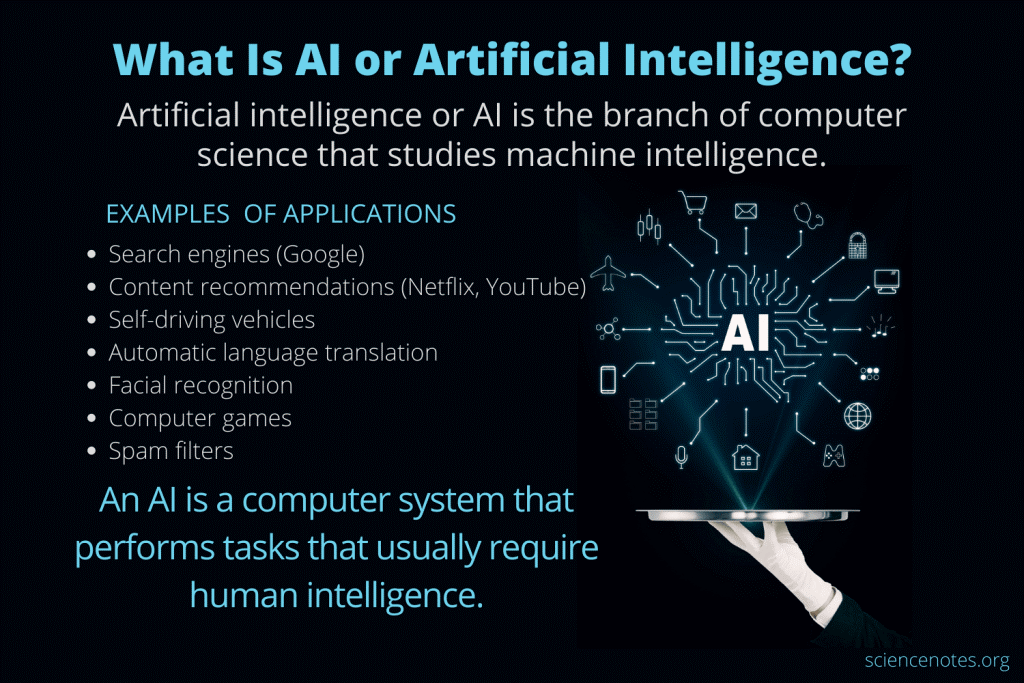
All these are some examples. The variety is enormous.
The various subfields of AI research are centered on particular goals and the use of particular tools.
Where we are and where we are going in the AI development process
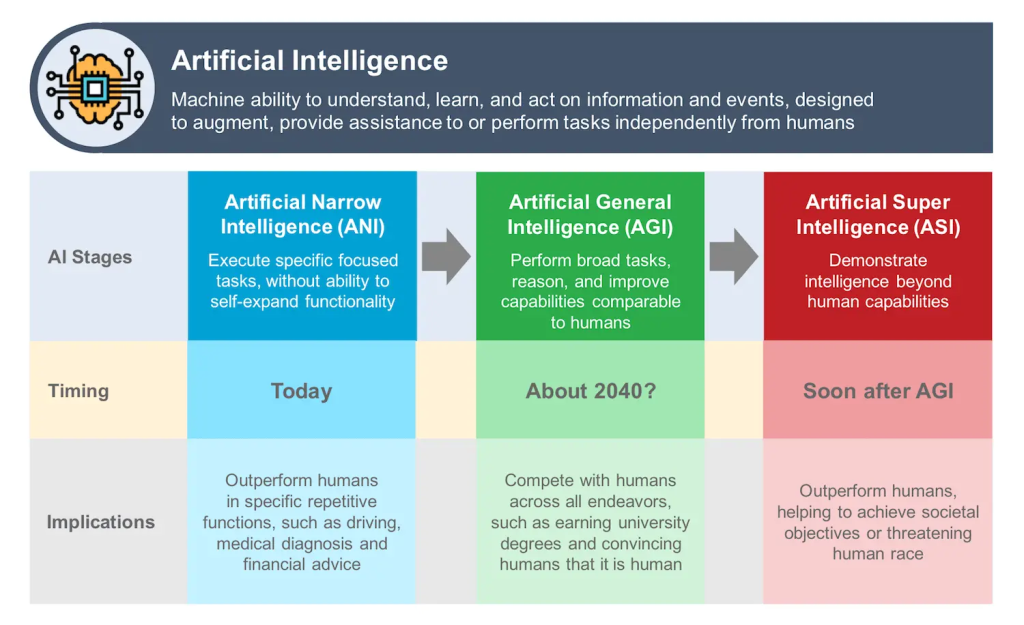
It is believed that we are currently in the process of moving to the IAG phase of AI technology, as more and more ways to train AI to think and solve problems in the same way that humans do.
The goal for this second of the stages of AI is to solve problems that it has not been trained to do and to work through logical reasoning in rule-based systems to perform a task, just as a human would.
For this reason, AGI is also known as strong AI, as it has uses in various areas.
For now, IAG remains mostly fictional.
Generally speaking, it is estimated that robots with general capabilities, capable of operating in multiple fields with a wide range of data sets, will not be around until at least 2040, if not later.
However, there are experts who believe that we will have the first examples of AGI within 5 years.
The final stage of evolution proposed by AI researchers is the moment when AI becomes self-aware and pushes the boundaries of human intelligence.
At this time, which is known as singularity and transcendence, we will not be able to tell the difference between humans and AI, or we will be completely dependent on artificial intelligence to provide direction and prediction.






